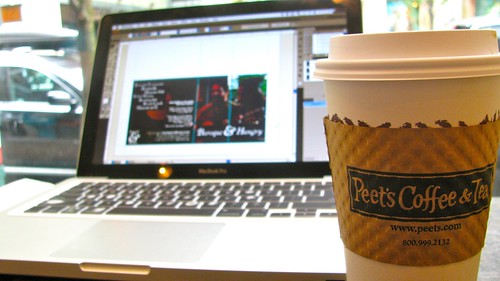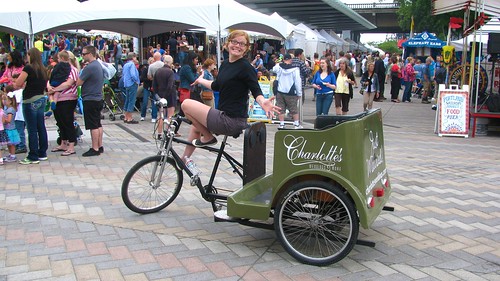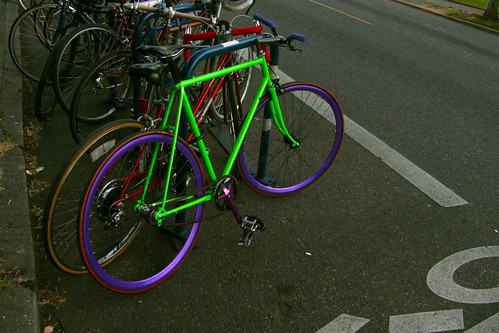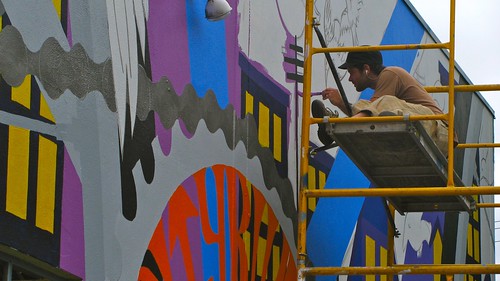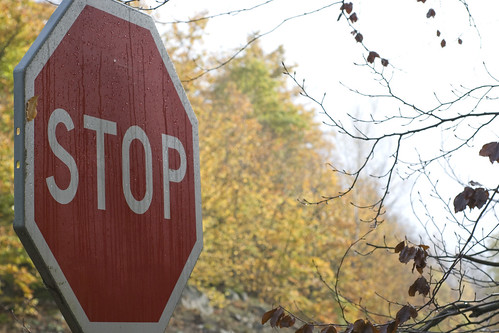Traffic
Review – The War On Britain’s Roads (BBC 1, Wednesday 5th December)
Note - if you're in the UK you can watch the programme on iPlayer here.
I should probably start by saying that I'd seen a fair amount of publicity for this program (specifically this, this and this), and I was watching with a view to complaining to the BBC about it. Having watched it, I have to say it was nowhere near as bad as I feared it would be, but it could have been much better. In short - I'm not angry, just disappointed.
The programme starts with Gareth, a 24-year old cyclist. He initially comes off as a bit arrogant. A little bit later he's shown antagonising a taxi driver by banging on the side of his taxi when it passes a little bit too close. He says with a smile, "I've noticed if you touch someone's vehicle they get very possessive about that". So it appears that he knows exactly what he's doing. While I understand the point he makes - that if you can touch someone's car as they overtake you, then they haven't given you enough room - I don't think it's a particularly smart thing to do. Since the documentary aired Gareth has said that he felt it misrepresented him. Gareth's YouTube page is here.
The next section is Mark, a traffic policeman on a bicycle. This was quite interesting as we see him chase down a motorcyclist that fails to stop. While there are a couple of scary manoeuvres he seems highly skilled and in control. We also see him pulling over drivers and cyclists for minor traffic offences. There are lots of cyclists jumping red lights, Mark points out "it's not the crime of the century, but it could get you killed".
Next up is a woman who's daughter was killed while cycling, she was crushed by a cement mixer which turned left across her. This was quite an inspirational story as we hear about her campaign for better safety standards. She starts by buying shares in the company so she can speak at their Annual General Meeting, this leads to the company improving the training its drivers receive and installing proximity detectors on the sides of its vehicles.
Next there are two incidents caught on helmet camera. First there's a very scary video from Glasgow. As a cyclist approaches a roundabout a truck travelling at speed fails to give way. The cyclist slams his brakes on and the truck misses him by a few centimetres. It's absolutely terrifying (it's on YouTube here). The second incident was a road rage attack by a driver on a cyclist. The video was posted on YouTube and widely reported in the press, which led to the driver being identified and prosecuted.
The Traffic Droid is the next section. While the programme describes him as "policing the situation himself", in reality he's a cyclist who videos poor driving (and cycling) and posts it online. We see him videoing drivers who are using mobile phones and iPads and handing them flyers with his YouTube address on. He describes how he started filming traffic violations after being knocked off his bike 3 years ago, he breaks down and cries as he talks about it.
Finally we see footage of a courier race across London. The cyclists ride in what can only be described as an aggressive and nearly suicidal manner. It's this short section that seems to have caused most of the controversy, and it's not hard to see why. The sheer recklessness is breathtaking, but it's so far removed from the typical behaviour of the average cyclist. It appears to have been included simply for shock value.
In summary, I have mixed feelings about this documentary. The section about cement mixer safety I thought was positive, as it highlights a particular danger to cyclists and shows that if the will is there then these issues can be tackled. I thought the section with the cycling traffic policeman was interesting and it was also good that it showed him being even-handed in his dealings with cyclists and drivers. His clam approach and ability to defuse situations was a marked contrast to some of the other participants in the documentary.
I felt the central premise of the documentary, a war between cyclists and drivers, was flawed. The majority of cyclists are also drivers - 87% of British Cycling members own a car and the president of the Automobile Association is a keen cyclist. How can two groups be at war when so many people belong to both groups? I thought the other main failing of the documentary was a lack of context. For example a few cycling accident and death statistics were mentioned, but there was no comparison to other activities such as walking, or to accident and death statistics for cycling in other countries. The documentary would have left viewers with the false impression that cycling on Britain's roads is a very dangerous activity, I hope my mum hasn't watched it.
I also felt that the documentary missed an opportunity to discuss cycling facilities and road layout, which can be a cause of conflict between cyclists and drivers. There were a few incidents shown were a cyclist in a narrow cycle lane was overtaken by a vehicle which passed closely to the cyclist without actually moving into the cycle lane. One of the road rage incidents shown occurred after a driver was unable to overtake a cyclist through a traffic calming system.
Review of the Best Bicycle Tail Lights in 2012

Taking some lights out for a test ride at night
UPDATE: This review is a couple years out of date! For frequently updated bike light recommendations and reviews, visit The Bike Light Database.
Whether you bike to work every day regardless of how dark it is outside, or only let dusk catch you on the occasional evening ride, every cyclist should have lights. They're required after dark by law in almost all regions, and are a crucial piece of safety equipment even where they're optional.
Remember that although spending $30-50 on good lights may seem like a lot of money, the medical costs from a single accident would far surpass that initial investment. If you bike at night (or even bike on busy roads during the day - several of these lights are daytime visible), a bright light is a must-have!
Choosing a light can be a difficult task though - there are countless options to choose from ranging from cheap $3 flashers to blindingly bright $200 powerhouses. The internet already has some good comparisons of bike headlights, but there's a surprising lack of comprehensive taillight comparisons, so I decided to make one. For science.
In total, I reviewed 16 different taillights from 8 of the top light manufacturers. I chose which lights to review based on a survey I conducted on the parent site for this blog - Bicycles Stack Exchange, a Q&A site for everything about bicycles, and also asked on Reddit's /r/bicycling. The incumbent in this race is the Planet Bike Blinky Superflash. Everyone has this light (myself included). Not only is it the light most people own, it's also the most-loved - 20% of respondents said it was their favorite. In terms of what people wish they had or are considering buying, the Planet Bike Superflash Turbo, Portland Design Works' Radbot 1000 and Danger Zone, and the Niterider Cherrybomb were all high on the list. Many people expressed an interest in DiNotte's lights, but unfortunately we were unable to acquire one for this review and the company declined to loan a light for the review.
I'm sure you're all dying to know which light is the best, but first, let's take a look at the contenders.
Table of Contents
How Cars Can Be Nice to Cyclists
A message to drivers:
We know you don't all hate cyclists. Many of you--most of you?--probably like bicycles and have fond memories of riding one as a kid. Many of you may not understand why adults would ride a bike when they could be in a car, but hey! --live and let live. You yourself may even ride from time to time.
We know that you try to keep alert for cyclists and pedestrians. It's the occasional driver talking on a cell phone while giving themselves a pedicure that makes you all look bad.
Also, we're truly embarrassed by the stupid, suicidal riders you see on the roads. Those of us who know how to cycle in traffic see wrong-way cyclists (or worse, cyclists who ride on the goddamn sidewalk) as misguided at best, damn fools at worst. Yeah, they're our fellow cyclists (sorta), but every time we see a ninja cyclist at night dressed in black without even a reflector, let along lights, who's riding salmon-style on a divided highway... we shudder. These riders are road-pizza in the making.
We're trying to educate them, but a lack of cyclist education in driver's ed classes (coupled with all the misinformation that's out there) makes this a hard, uphill task. Some days, it makes us all seem like salmon swimming upriver.
(Personally, I'd love to see more cyclists get traffic citations. Sure, the bike advocacy organizations would howl about a "needless and vengeful crackdown on cyclists"--or something along those lines--but nothing makes people more law-abiding than the threat of a ticket.)
If you're one of these drivers who considers cyclists fellow road users, you may have wondered: How can drivers like you make cyclists' lives easier? more »
A tale of a malfunctioning sensor
Most urban cyclists have probably encountered the problem of triggering traffic signals once or twice. Most of the time, sensors at traffic lights detect bicycles right away, and are often helpful in reducing wait-time. I know of a few intersections where the sensors are finely tuned so that the light turns green before you even get there, if nobody is coming the other way. What happens though when one of these sensors is out of whack?
I go to school in Corvallis, OR, which currently holds the record for the highest percentage of bicycle commuters nationwide. There's a particular intersection here where the under-pavement loop-type sensor simply wasn't working for me. Some friends had mentioned having problems at the same intersection as well. The sensor is for a left-turn arrow in a turn-only lane, so it probably doesn't get huge amounts of bike traffic, but I use the turn lane there, as do others. You can see the intersection in the streetview image below:

As you can see, there's a pavement indicator for where bikes should stop to trigger the signal. There is also one for the bike lane on the right. It's difficult to see in this image, but there are pavement cuts which indicate a buried sensor loop, which works by magnetic induction, not a visual cue. When I arrived at the intersection, I stopped just past the marker, and waited for the light to turn. It never did. Fortunately, the intersection has one of the new "flashing yellow" sequences, so I was able to turn left when there was a break in traffic, although I did have to wait two light cycles before I was able to make it across.
So, what to do when a sensor seems to be malfunctioning? In hind sight, I should have tried again before seeking help, but having heard similar reports from other cyclists, it sure sounded like there was a problem. Fortunately, it's easy to contact the city public works and get problems checked out. I sent an email on a Sunday afternoon, and on Monday I got a response back from them:
Thank you for the description of the concern you have at location. We went today to test the southbound left turn loop. This movement of the intersection uses a quadrapole loop for vehicle detection. In layman's terms, a loop is essentially an antenna in the pavement, tuned to a specific frequency, to detect metal objects. When a metal vehicle passes over the loop the frequency of the loop is changed and acknowledged in the traffic signal controller. A quadrapole loop looks like two long narrow rectangles, placed side by side, with a common line in the middle. We have a bike marker placed on the pavement, in the center of the quadrapole, at the very front, behind the stop bar. The bike's crankset should be placed directly over this marker. We use a Specialized MTB from Public Works to perform our bicycle detection. We feel this type of bike represent the majority of commuter cyclist in Corvallis. We did not find any issue with the southbound left turn loop at location. Every time we installed or removed the bike from the detection, it was acknowledged in-kind at the traffic signal controller. If you have any questions or concerns please contact me via email or phone.
Wow! In less than 24 hours, a work crew was sent out to check the sensor, and verified that it's properly working. I was slightly embarrassed to hear that the loop is functioning just fine and that I had not been triggering it properly, but that feeling was vastly overshadowed by how impressed I was with the city's quick and helpful response. This is the same city where a police officer was dispatched to cut loose my friend's bike when her lock got jammed (after proving ownership of course), and where the University just finished installing about 500 new bike racks across campus. No wonder so many people bike commute here!
I have yet to return to this intersection since filing the report, since I don't bike that direction often. The next time I do, I'll be sure to try the public works official's tips for positioning the bike to properly trip the sensor. It's odd that this problem occurred, since I've never had trouble with any other intersection. It's possible that the light timing is slightly different and if I had waited another cycle, I would have gotten an arrow. It's also possible that I was just not paying close enough attention to where I was positioning my cycle - if I had originally triggered the sensor, but then moved off it slightly, it might have thought that I went through the intersection during the flashing yellow cycle.
Regardless of the true cause of the light mishap, which I now know won't happen again, the lesson learned is this: if something looks amiss, don't hesitate to contact your municipality's public works department. They're here to help you out, and if my experience so far is any indication, they'll be more than happy to help.
A Jersey Boy Visits Portland
While waiting for the Red Line to take us to our hotel, we saw several cyclists; I noticed that many of them--most of them, almost all--were signaling their turns.
Sure, most of them were using that weird, left-arm right-turn signal that kids learn in driver's ed, but they were signaling.
Portland, Oregon is--to a right-coast denizen--bike paradise. I'd heard of the city's amazing bike facilities. (I'm a volunteer copyeditor for the Bicycle Transportation Alliance, and why that's the case is another story.) Actually seeing the bike lanes and transit facilities and the competent riders and drivers who know how to treat them--reading about all this did very little to prepare me for the reality.
We visited the city for a week, and had a great time. We rode on the Steel Bridge, and the bike traffic was inspiring. (We even saw a guy on a welded-together tall bike rounding corners. How do those guys dismount, let alone stay upright?) We rode the west-bank river walk. We visited Powells. (Several times!) We saw City Bikes paint their new mural. We spoke to buskers--and saw them get chased away by the police. And we drank coffee. A lot of coffee.
Let's back up a little bit:
Drivers in my home state of New Jersey have a pretty bad rep. The forums are filled with tales of drivers who scream at cyclists, and stories of idiot high-school seniors in SUVs throwing slushees at bike commuters. After all, bikes in New Jersey are ridden by children and people whose licenses were pulled after a DUI conviction.
To be fair, the cyclists themselves in the Garden State are said to be, almost to a rider, wrong-way cyclists with their saddles too low who run red lights and ride on the sidewalks when they feel like it. Or so the thinking goes. I can't really fault any driver here who thinks that cyclists are scofflaws--because most of us are. But let's get back to Portland:
After a day or so in the city, we rented bikes from the hotel: machines that the hotel called "cruisers" and I called "rattling deathtraps". We had to pump up the tires and raise the saddles, and I did my best to tighten the handbrakes so they actually worked. (It's a shame the city has no proper bike share program.)
When we were riding across the Burnside Bridge into SW Portland, I (stupidly) signaled at the last minute to make a left turn. A car slowed and let me into the lane. Maybe this is normal behavior for the city, but it's nearly unheard of back home. (My wife was smarter than I was, and refrained from making that turn.) I rode more intelligently later in the day, but cars continued to treat me in a similar fashion: like a vehicle who deserved access to the road. Jersey drivers don't even treat other cars this well.
Bikes are everywhere. There's on-street parking for bikes. Businesses have racks as a matter of course, and they're not hidden away where thieves can snip open locks with a reasonable expectation of privacy. (Privacy is a constitutional right, yes?)
This treatment of cyclists as equal road users obviously must feed back in some way. Drivers and cyclists seem to respect each other in a way that's hard to explain to someone that lives where cab drivers won't even let you change lanes.
Later on in our trip, we stayed with cousins in town and they lent us a pair of mountain bikes. When we took those bikes on the MAX, people offered to move out of the way so we could get to the bike hooks (well, they did most of the time), and more than one commuter struck up a conversation with us. Did I mention that Portland's transit is cheap? A seven-day pass for all Portland area transit is exactly the same as a single round-trip ticket on the train from our house to New York City. That's one round-trip ticket = seven days of unlimited riding.
Portlanders, if you don't realize what you have and what the BTA has done, I invite any of you to come to New Jersey and ride with me in Newark or Paramus or Clark. You'll figure it all out--and you'll figure it out quickly--the first time a cab driver accelerates to keep you out of a lane, or a bus driver tries to squeeze you off a road.
Cherish what you have, and know that you have my admiration. (And my envy.) This Jersey boy knows you've done a great job!
(A similar version of this post has been written for the BTA blog.)
Stop
On my way to work today, several cyclists coming in the other direction each warned me that there was a policeman at the intersection.
- "What's that to me," I thought, "I'm doing nothing wrong"; and I asked the latest one why she had told me.
- "They're at the stop sign: catching cyclists who don't stop!"
I wanted to know, so I set off to find them, and there they were, just a block away: two policemen, wearing shorts, in the shade of a tree, at a T-junction with a stop sign, with their notebooks out and two police bicycles with them, on a main residential back-street (one of the city's many "suggested on-street routes" for bicycles).
Being cyclists themselves, I reckoned they would know the realities of cycling.
I pulled up to the policeman who was nearest to the curb, and waited for him to look up from his notebook and address me.
- "I heard you were stopping bicycles who don't stop at stop signs", I said.
- "That's right", he replied.
- "How much stop do you like to see in a bicycle, at a stop sign?"
And this is what he told me.
- "80% of the accidents that we know of happen at intersections. We're out here trying to prevent that." [He didn't need to tell me that bicycles often don't stop at stop signs.]
"Some people [bicyclists] don't seem to realise that they're a vehicle," [c.f. 'vehicular cycling'] "and that the traffic laws apply to them." [I know that car drivers, here, can be fined for doing a "rolling stop": i.e. for failing to come to a "complete stop". When driving a car I come to a complete stop, as a matter of principal.]
[At this point I'm thinking, "Yeah but I'm on a bicycle: momentum matters to me. I slow down, to walking speed or less. I look. I continue if the coast is clear, if there's nothing coming on the side-street, if there are no pedestrians about the cross the road. I can see all around me, better than when I'm driving. I obey the laws enough: I ride as safely as I can. Why must I come to a "complete stop" on a bike, put my feet down, only to obey the letter of the law?]
"I see people blow through an intersection without slowing down and without even looking. I'm not saying that people need to stop for 3 full seconds. I do want to see a head-check: look one way, look the other ... and repeat: look again, check each direction twice, and then go on."
[So now I'm thinking, "Yeah, I see what I'm doing right" (I slow down and look); "and what I could be doing better" (look twice).]
"And if you see a policeman, come to a complete stop."

